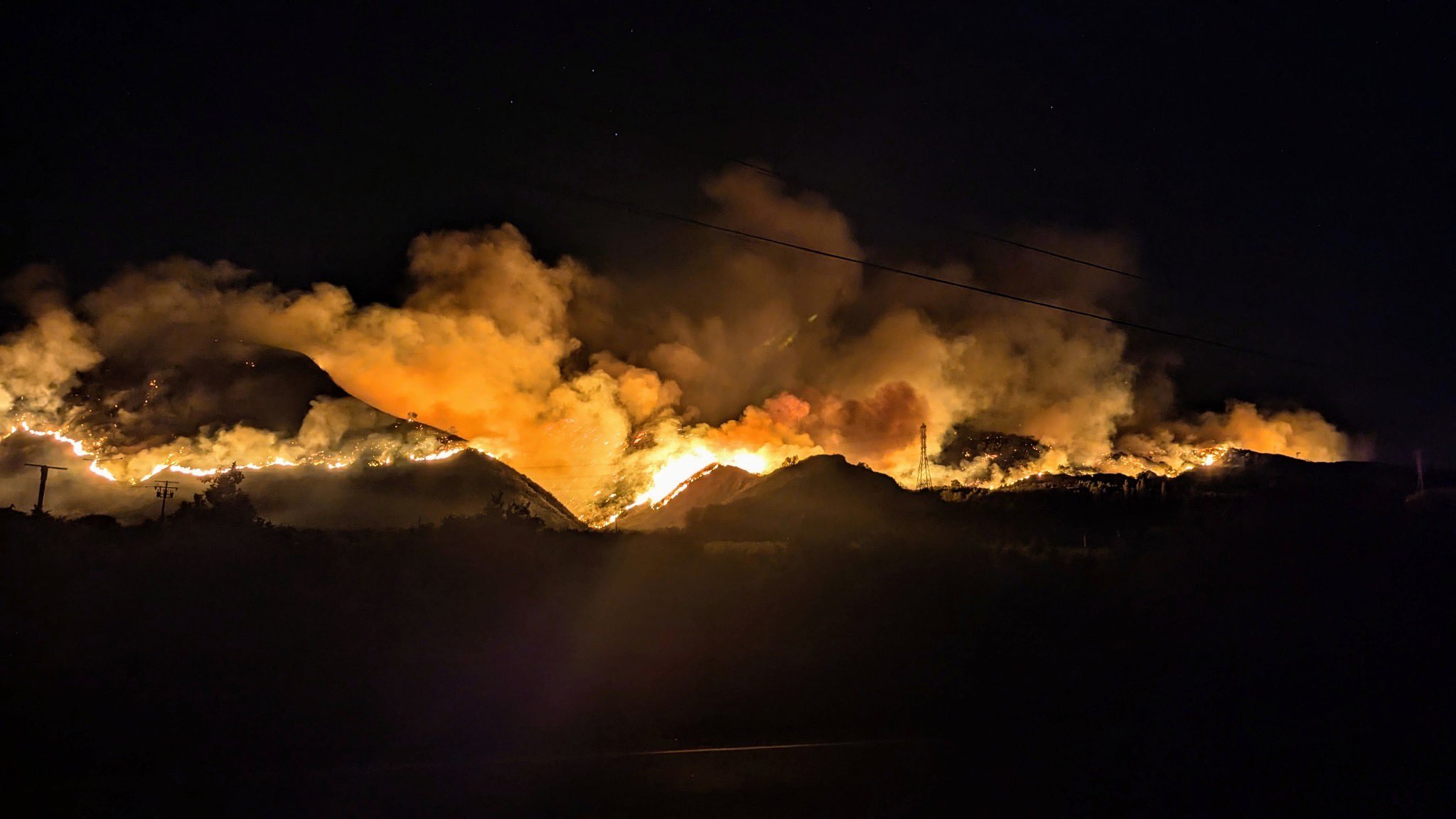What we’re watching: Weekly disaster update, November 11

We know all too well that disaster can strike anytime, anywhere in the world. Some disasters make headlines; others do not. Here at the Center for Disaster Philanthropy (CDP), we monitor the status of disasters worldwide and compile a list of the ones we’re tracking weekly, along with relevant disaster-related media coverage.
Here’s what we’re watching for the week of Nov. 11, 2024.
New or Emerging Disasters
Floods – Missouri: Intense storms brought six to ten inches of rain, spawned two tornadoes and caused flash flooding in parts of Missouri. The floods killed five people, including two poll workers. The storms prevented many voters from reaching their polling places, so Governor Parson allowed citizens to vote at any polling place in the city or county.
Read more about floods in our 2024 U.S. Floods disaster profile.
Hurricane Rafael – Cuba and Panama: Hurricane Rafael made landfall in Cuba on Nov. 6 as a Category 3 storm. Strong winds thrust the island into its second blackout in weeks, destroyed homes and damaged infrastructure. At least 461 homes collapsed, and more than 283,000 people were evacuated. No fatalities were reported.
While Rafael was still a tropical depression, the system caused heavy rains that killed five people in Panama on Nov. 2., with at least one thousand people directly impacted and 43 homes affected.
Read more about hurricanes in our 2024 Atlantic Hurricane Season disaster profile.
Earthquakes – Cuba: On Nov. 10, two large earthquakes (magnitude 5.9 and magnitude 6.8) hit the eastern coast of Cuba, followed by numerous aftershocks. The quakes struck less than 25 miles south of Bartolomé Masó in Granma Province, causing power outages, landslides and building damage. No fatalities have been reported thus far.
Cuba is still reeling from Hurricane Rafael (see above) and weeks of problems with the electrical grid that led to island-wide blackouts.
Wildfires – U.S.: Spurred by drought, wildfires broke out in several states, including California, Massachusetts, New Jersey and New York.
- Southern California: The Mountain Fire in southern California has burned over 26,000 acres since Nov. 6., after a Santa Ana wind event brought dangerous fire weather conditions to the region. At least 134 structures have been destroyed, and another 46 have been damaged. Firefighters have only surveyed some of the properties and have found damage in 75% of those surveyed. Governor Newson declared a state of emergency in Ventura County on Thursday, Nov. 7, and over 14,000 evacuation notices were sent to residents 6. Eleven people have been injured, but there have been no fatalities. The fire is 26% contained as of Nov. 10 and covers 32 square miles.
- Massachusetts: Several fires burned in the state, including a 200-acre fire in the Lynn Woods Reservation, a municipal park about 10 miles north of Boston. Although only 15 fires were reported in the state in October, 2024 saw a 1200% increase in the frequency of wildfires, as 196 have burned so far this year.
- New Jersey: A fire in Greenwood Lake, bordering New Jersey and New York, saw the death of an 18-year-old NY parks employee on Nov. 9. The teen was fighting the Jennings Creek Fire, a major brush fire threatening several structures in Passaic County’s West Milford and Orange County, New York, that had grown to almost four acres by Nov. 10. Numerous other fires were burning throughout the state, including a 175-acre fire in Pompton Lakes that is now 75% contained, and a 350-acre fire in Ocean County started by a shotgun round at a shooting range.
- New York: Several fires burned in New York City this past weekend, including two in the iconic Prospect Park in Brooklyn. The 526-acre park is the oldest standing forest in the borough. The two-acre fire in the Nethermead meadow, the second fire near the Lakeside ice rink, was put out one hour after it was discovered on Nov. 9. Two brush fires also broke out in Marine Park. Other park fires this week included two in VanCortlandt Park and one in Highbridge Park, all in the Bronx. Mayor Adams called for caution and banned grilling in NYC parks while the drought continues. Smoke from New Jersey and the New York City wildfires were causing air quality issues across the region.
- Pennsylvania: A fire in Reading, Pennsylvania, broke out on Neversink Mountain shortly after midnight on Nov. 9 and was controlled by the afternoon, although mop-up will continue for days. The state issued a short evacuation, and firefighters managed to save all of the homes. One firefighter was injured.
Read more about wildfires in our 2024 North American Wildfires disaster profile.
Typhoons Yinxing, Nika (Toraji) and Ofel – The Philippines: Due to its location and climate, the Philippines is one of the most disaster-prone nations in the world.
- Typhoon Yinxing: Just days after Tropical Storm Trami and Super Typhoon Kong-Rey battered the Philippines, the northern region was once again hit by a strong typhoon with winds in excess of 109 mph, worsening an already dire recovery situation. At least 30,000 people evacuated to shelters, power lines were downed, homes and buildings were damaged, and trees were uprooted. There were no injuries or casualties, but as of Nov. 7., at least 630,000 people were still displaced after the three storms, including 172,000 still housed in emergency shelters. The Guardian said that Trami, Kong-rey and Yinxing killed 159 people and left 700,000 displaced.
- Typhoon Nika (Toraji) The fourth typhoon in three weeks made landfall in Aurora at 8:10 a.m. (local time) on Nov. 11 with winds of 81 mph. It then moved toward Isabela, then Northern Luzon.
- More than 3,500 families in Aurora and Isabela had to evacuate, and thousands more in Luzon, after the government ordered the evacuation of 2,500 villages. Typhoon Nika (also called Toraji) is expected to leave the Philippine Area of Responsibility (PAR) on Tuesday, Nov. 12, the same day Typhoon Ofel is expected to arrive.
- Typhoon Ofel: Ofel (the local name in The Philippines) formed as a tropical depression on Nov. 11 but is expected to travel through the PAR and make landfall in Northern or Central Luzon on Nov. 14 or 15, possibly at peak intensity.
Previous/Ongoing Disasters
Volcanic Eruptions – Indonesia: Mount Lewitobi Laki Laki on the island of Flores, erupted twice this week. The first eruption on Nov. 4 resulted in nine fatalities and 64 injuries. At least 10,000 people were affected.
A Catholic convent was destroyed, volcanic ash and debris covered buildings and hot volcanic material set houses on fire. No one was hurt in the latest eruption, although debris destroyed a school and created large craters where rocks fell. The Indonesian government plans to move about 16,000 people from the danger zone and has urged those who have fled not to return.
Avian Flu (H5N1) – Global: As the H5N1 virus spreads – including the first case in a person in Canada, reported on Nov. 10 – some are questioning whether it will be the next pandemic.
In the U.S., the Centers for Disease Control and Prevention (CDC) has confirmed 46 cases in six states since April 2024. The CDC says that of these, 20 cases were of people exposed to H5 bird flu-infected poultry, and 25 people were exposed to sick or infected cows. One case in Missouri has no determinable source (and a second is under investigation).
The World Health Organization reported on Nov. 4 that there have been 13 human cases reported in 2024, including 10 deaths, across five countries in the Western Pacific Region (Australia, Cambodia, China, Lao PDR and Vietnam).
While H5N1 is found in many bird species worldwide, only Vietnam and the U.S. have reported cases in other animals. On Oct. 29, the first case of bird flu in a pig was reported in Oregon. It has also been reported in numerous other species in the U.S., including mice, foxes, dolphins, bears and cats (wild and domestic).
The CDC monitors bird flu using its usual flu surveillance systems and regularly reports the data on this dashboard. While the CDC says the risk is low, former CDC director Robert Redfield says, “it’s a matter of when not if.” The Washington Post published a Nov.5 opinion piece that provided four reasons Americans should be concerned about bird flu, including:
- “The epidemiology of the virus has changed a lot in a short time.
- Many cases are probably undetected.
- The virus might spread more easily than we’d thought.
- Flu season is almost here.”
Floods – Spain: The devastating floods that ravaged Spain last week killed 219 people, with 93 still missing. Over 36,000 people required rescue, and 190,000 were directly affected. Entire communities were submerged, and there is no estimation of when recovery will be completed. According to satellite images, 38,600 acres of land were submerged in the floods.
Read more about floods in Europe in our 2024 Europe Floods disaster profile.
Complex Humanitarian Emergencies – Nigeria
Many places worldwide are experiencing emergencies caused by conflict, climate change, drought, famine, economic challenges and other conditions that combine to create a complex humanitarian emergency (CHE). CDP maintains complete profiles on several CHEs, and what CDP considers Level 1 CHEs are profiled in this weekly blog post and tracked.
As of Oct. 28, recent floods in Nigeria killed over 300 people, affected 1.2 million across the country and displaced tens of thousands just in Kogi state alone. A lack of sanitation and clean water has caused an outbreak of cholera, with over 14,000 suspected cases and 378 deaths. People are in immediate need of mattresses, buckets, medications and clean water.
About 47% of children in Nigeria face acute malnutrition. The food insecurity crisis has worsened with armed conflict in the north displacing millions of people, disrupting their livelihoods and restricting access to agricultural lands. The floods have destroyed over 150,000 acres of farmland, worsening the crisis. In total, the lost cereal crops in Nigeria could meet the caloric needs of 13 million people.
Additionally, Nigeria has been embroiled in armed conflict for 14 years in the BAY states with Boko Haram, an Islamic terrorist group that aims to topple the government and replace it with an Islamic state. During this conflict, Boko Haram and its various factions have killed, displaced and abducted civilians. Young boys are recruited into nonstate armed groups, while women and girls face abduction, rape, child and forced marriage, and other types of violence. Recent suicide bomb attacks in Borno State killed 32 civilians and injured 42.
Around 8 million people face the worst of Nigeria’s humanitarian emergency.
In addition to the disasters listed above, we actively monitor the following disasters or humanitarian emergencies. For more information, see the relevant disaster profiles, which are updated regularly.
Join us this Thursday, Nov. 14
Webinar: Imagining 2025: What’s next for disaster philanthropy?

What We’re Reading
- Listening to nonprofits in moments of political uncertainty: 5 suggestions from grantees – The Center for Effective Philanthropy: “2,226 nonprofits offered suggestions in response to the question: ‘What advice would you give to the Foundation as it seeks to be as effective as possible in this changing U.S. political landscape?’”
- Disaster survivors want to rebuild safer, more sustainable homes, but cost misperceptions often stand in the way – The Conversation: “As a society, streamlining the rebuilding process so it delivers pragmatic information that emphasizes high-impact changes could make resilient choices easier.”
A moment of hope…After her son Jacob was hospitalized two days before Halloween, Amy Schmitt left a note on her door for trick-or-treaters apologizing that she couldn’t offer them candy this year. While at the hospital, Amy received texts from friends and family saying that neighborhood children were leaving the candy they collected on her doorstep for Jacob. “It’s overwhelming, all the love we’ve got… and I don’t know half these people,” Schmitt told ABC 7 News Detroit. “It’s amazing what these parents have raised these kids to be.”
